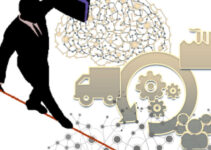JetBlue Airways Corporation is a low-cost American Airline company. The aviation company started its operations in 2000. Today, we’ll discuss the value chain analysis of JetBlue supply chain analysis; primary and supporting activities in the process of value chain analysis Example Company. They are inbound and outbound logistics, operations, marketing, and customer service; infrastructure, HRM, technology, and procurement as an application of the value chain analysis process.
Unique Features and Recognitions of JetBlue
- High Quality and Superior Service at a Lower Cost
- Top No. 1 Domestic Airline in Travel
- Leisure’s World’s Best Award in 2021
- High comfort in-cabin
- Customer service
- In-flight service
- Great value
The Value chain analysis of JetBlue supply chain analysis would analyze the primary and supporting activities in the process of value chain analysis. They’re inbound and outbound logistics, operations, marketing, and services; infrastructure, HRM, technology, and procurement. Here’s the supply chain analysis of JetBlue value chain analysis company example as follows;
Value Chain Analysis of JetBlue
Let’s discuss the primary and supporting activities involved in the process of value chain analysis of JetBlue supply chain analysis. It is an application of value chain analysis based on Porter’s model; some of the key elements and components of value chain analysis are as follows;
Primary Activities of JetBlue
The primary activities are directly involved in the production of products and goods and adding value to the company. Some of the five main primary activities in the value chain analysis of JetBlue supply chain analysis are as follows;
Inbound Logistics of JetBlue
I-Large Suppliers Network
JetBlue has established a very large network of suppliers comprising over 10,000 suppliers and vendors in various countries. The large and diverse range of suppliers network helps the company to smoothly perform its various operations in terms of timely receiving and delivering supplies.
II-Relationship with Suppliers
The focus of JetBlue is to build better relationships with suppliers and vendors. In order to improve the relationship with suppliers, the aviation company offers a dynamic discounting system to protect the interests of suppliers. The airline also provides educational and training programs to develop skillful maintenance staff and new pilots from different backgrounds.
However, the suppliers’ diversity initiative helps the company to become more inclusive to a wide range of people. It led the company to partner up with various diverse organizations, and they’re as follows;
- National Minority Supplier Development Council
- Women Business Enterprise National Council
- Minority and Women-Owned Businesses
III-Suppliers Code of Conduct
JetBlue has set a clear code-of-conduct for suppliers and partners. In order to keep working with the aviation company, they should comply with the laws and regulations of the aviation company in the following categories;
- Proper management system
- Regulatory compliance and business ethics
- Environmental stewardship
- Inclusive and Diversity
- Health and safety regulations
- Labor and human rights practices
Outbound Logistics of JetBlue
I-Distribution Channels
JetBlue employs various platforms for the distribution of tickets in various countries across the globe, along with its direct booking portal. They include 12 OTA Expedia and giant Priceline; the 12 OTA platforms are as follows;
- Kiwi
- Quick Travels
- Cheap Flight Fares
- JetSet Vacations
- Vagas.com
- Whatscheaper
- Vayama
- FlightNetwork
- FlyFar
- Vacation Express
- MyFlightSearch
- SmartFares
The five main hubs of JetBlue are as follows;
- San Juan
- Orlando
- New York, JFK
- Los Angeles
- Fort Lauderdale
- Boston
Operations of JetBlue
I-Sustainable Operations
JetBlue has made a strong commitment to environmental sustainability by decreasing the carbon emission rate into the environment. It comprises shifting its technology from gasoline and petroleum towards electric and clean energy. Some of the main sustainable operational steps that the airline has taken are as follows;
- Next-Generation aircraft that fly more with limited fuel consumption
- Latest airplanes (A320s) with the new technology of decreasing the carbon emission rate by 15%
- Sharklets improved wing design to decrease the carbon emission rate by 4%
- 30 million recycled bottles and cans annually
II-System Operations
The crewmembers of the airline JetBlue engage in multiple system operations to manage the flight operations of the airline. Their focus is on the details and clearly communicating with the other team members in a high-pressure environment. However, some of the main operations of the flight they manage are as follows;
- Flight planning and scheduling
- Maintenance control and dispatching
- Monitoring and evaluating various operations
- Focusing on specific regions, equipment, and flights
Marketing & Sales of JetBlue
I-Marketing & Advertisement
JetBlue employs multiple media channels for marketing and advertisement of its offers and brand. The media channels are YouTube, Hulu, TV, digital media, social media, print media, and other channels. However, some of the most popular slogans and campaigns of the company are as follows;
- “You above all”
- “We like you, too”
- “Unbelievable”
- “If you wouldn’t take it on the ground, don’t take it in the air”
Services of JetBlue
JetBlue offers a wide range of services to air travelers and passengers. It allows the company to improve the overall customer satisfaction level and provide a better in-flight experience. However, some of the main services of the company are as follows;
- Soothing interior design
- Sufficient leg spacing
- Comfortable seats
- Satellite TV
- Inflight entertainment
Supporting Activities of JetBlue
Supporting activities are indirectly involved in the production of products and goods and adding value to the company. Some of the main supporting activities in the value chain analysis of JetBlue supply chain analysis are as follows;
Infrastructure of JetBlue
JetBlue has established a very large infrastructure of 290 aircraft fleet size, tech and maintenance staff and operations, suppliers, and distribution network. The well-organized and systematic infrastructure of the aviation company helps the company to smoothly perform its various operations; and timely deliver the service to the customers without any flight delays and disruptions.
HRM of JetBlue
JetBlue has employed over 24000 employees to manage its global in-flight and aviation operations. The human resource management department of the airline plays a key role in building a healthy and professional working environment; and efficiently allocation staff and resources in a pressurized environment. In fact, the HRM department makes sure that all the operations go on track without any disruptions.
Technological Development of JetBlue
JetBlue invests a significant amount of capital resources in the technological development of its existing aircraft. The technological development and maintenance of the fleet help the company to update its airlines. As a result, it allows the aviation company to improve the overall customer satisfaction level and provide a better in-flight user experience to the passengers.
Procurement of JetBlue
JetBlue is highly careful and cautious about the ethical sources and procurement of supplies, materials, and components from suppliers and vendors worldwide. In order to make sure the performance of suppliers, the airline has set up clear regulations and codes to analyze their compliance with human right standards.
Conclusion: JetBlue Value Chain Analysis Example Company | Application of Value Chain Analysis Process
After an in-depth study of the value chain analysis of JetBlue; we have realized that JetBlue is the world’s leading aviation company. If you are learning about the JetBlue value chain analysis example company; then you should keep in mind the abovementioned primary and supporting activities. They’re inbound and outbound logistics; operations, marketing and sales, and services; infrastructure, procurement, HRM, and technological development as an application of the value chain analysis process.
Ahsan is an accomplished researcher and has a deep insight in worldly life affairs. He goes Live 3 days a week on various social media platforms. Other than research writing, he’s a very interesting person.


